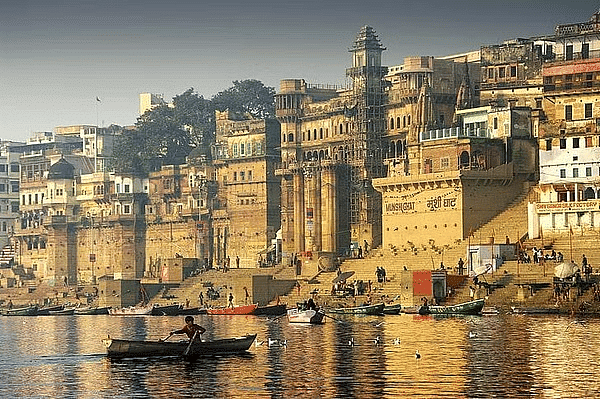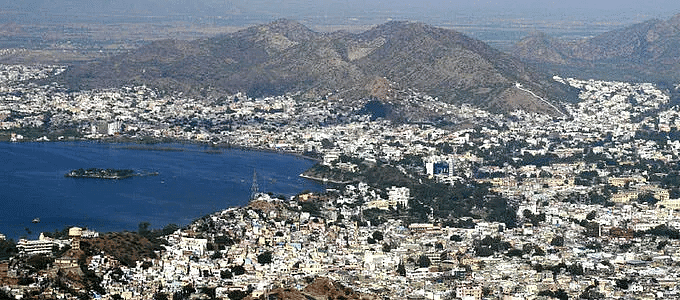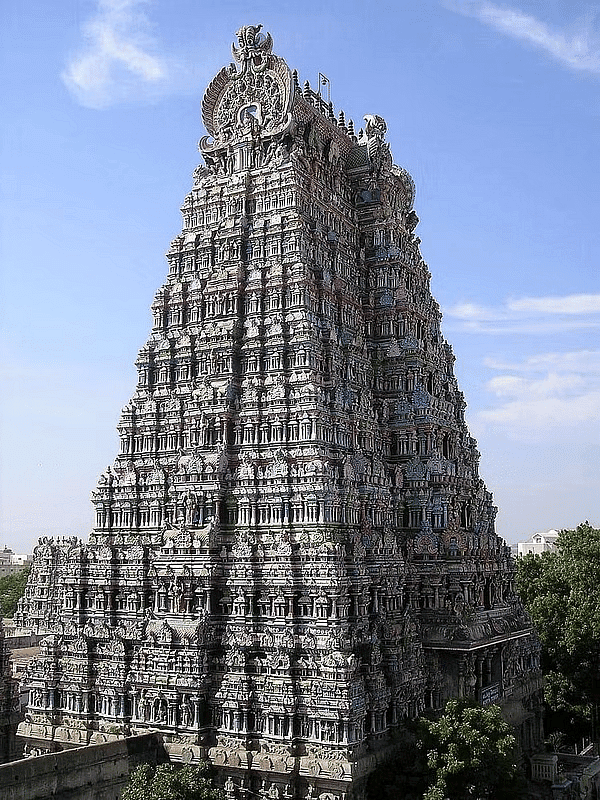UPSC Exam > UPSC Notes > History for UPSC CSE > Nitin Singhania Summary: Legendary Cities of Ancient and Medieval India
Nitin Singhania Summary: Legendary Cities of Ancient and Medieval India | History for UPSC CSE PDF Download
| Table of contents |

|
| Early Medieval Period (6th-13th Century) |

|
| Central Medieval Period (13th—16th Century) |

|
| Late Medieval Period (16th Century onwards) |

|
| Delhi — A City of Seven Sisters |

|
Early Medieval Period (6th-13th Century)
Varanasi (Banaras)
Varanasi, also known as Banaras, is an ancient city situated on the left banks of the Ganges.Varanasi
- The name "Varanasi" is derived from the confluence of two Ganges tributaries, Varuna and Assi.
- In the Mahabharata, it is referred to as Kasi, and the Sanskrit word "kas" means "to shine," giving Varanasi the epithet "City of Light."
- The city boasts a rich cultural and religious heritage and is home to around 2,000 temples, including the renowned Kashi Vishwanath temple.
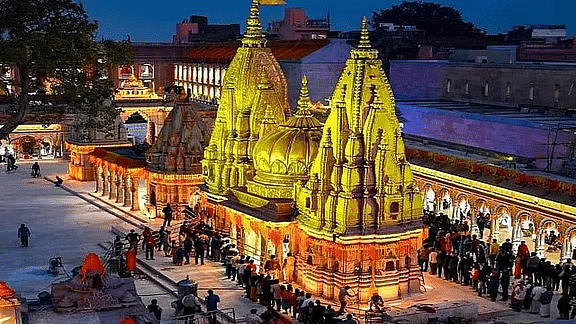 Kashi Vishwanath Temple
Kashi Vishwanath Temple - During Gautama Buddha's time, Varanasi was mentioned by the Chinese traveler Xuanzang, who visited the city around 635 AD.
- Xuanzang highlighted Varanasi as a center of religious and artistic activities, mentioning about 30 temples with approximately 30 monks in the 7th century.
- The city's religious significance further grew in the 8th century when Adi Shankara established the worship of Shiva as an official sect.
- The Kashi Vishwanath Temple, located in the Vishwanath Gali of Varanasi, is dedicated to Lord Shiva and is one of the twelve Jyotirlingas.
- The Ratneshwar Mahadev Temple, situated at the Manikarnika Ghat, has a unique nine-degree slant and was built close to the Ganga River.
- Chandradeva, the founder of the Gahadavala dynasty, made Banaras a second capital in 1090.
- However, in 1194 AD, the Ghurid conqueror Muizzuddin Muhammad Ghuri defeated Jayachandra's forces and caused destruction in Varanasi, including many temples.
- Varanasi has historical importance as it is the birthplace of important figures from the Bhakti movement, including Kabir and Raidas.
- In the early 20th century, Annie Besant founded the Central Hindu College, laying the foundation for the creation of Banaras Hindu University (BHU) in 1916.
- The city is well-known for its silk weaving industry, producing fine silk and Banarasi Sarees with intricate gold and silver thread work, often used for weddings and special occasions.
- Notable places in Varanasi include the Aghor Peeth, Alamgir Mosque, Durga Temple, Jantar Mantar, Sankat Mochan Hanuman Temple, Mahatma Gandhi Kashi Vidyapith, Shri Vishwanath Temple on the BHU campus, Ashoka Pillar, Bharat Kala Bhavan (Art Museum), Bharat Mata Mandir, Central University for Tibetan Studies, Dhanvantari Temple, Ramnagar Fort, Riverfront Ghats, Tulsi Manas Temple, among others.
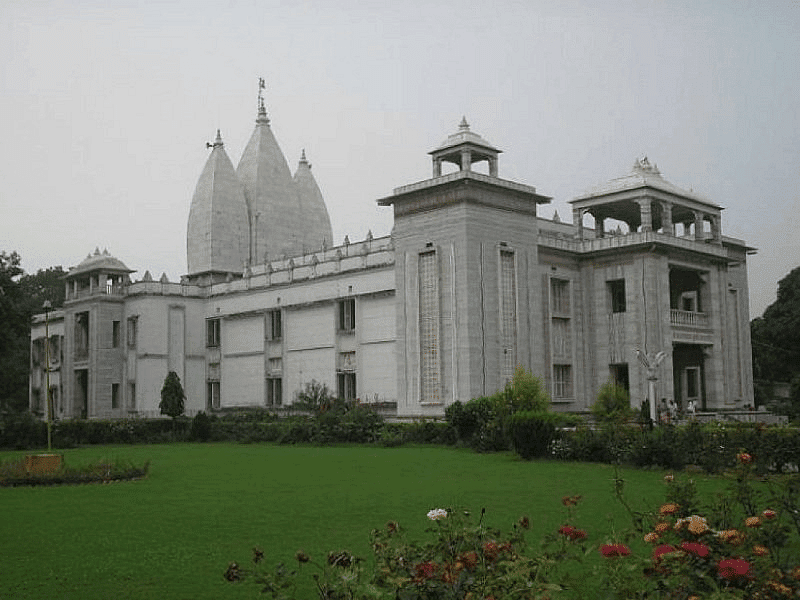
- Culturally, Varanasi is home to the Benaras Gharana of Hindustani classical music, producing renowned artists like Bismillah Khan, Sitara Devi, Girija Devi, and more.
- In 2022, Varanasi was nominated as the first-ever SCO Tourism and Cultural Capital for the period of 2022-23 in the 22nd Meeting of the Shanghai Cooperation Organization (SCO) Council of Heads of State held in Samarkand, Uzbekistan.
Ajmer
Ajmer, originally known as Ajayameru, was established by the 11th-century Chahamana king, Ajayraj Singh Chauhan. The city, surrounded by the Aravali Mountains, has a rich historical background.
Founder and Early History:
- Founded by Chahamana king Ajayraj Singh Chauhan.
- The early name of Ajmer was Ajayameru.
Historical References:
- The city's name is mentioned in Palha’s Pattavali, according to the renowned historian Dasharatha Sharma.
- Vigraharaja IV’s Prashasti, found at Adhai Din Ka Jhonpra, indicates that Ajayadeva (Ajayraj Singh Chauhan or Ajayaraja II) relocated his residence to Ajmer.
Ghurid Annexation:
- In 1193, Ajmer was annexed by the Ghurids.
- It was later returned to Rajput rulers under the condition of tribute.
Mughal Rule:
- Around 1558, Mughal Emperor Akbar conquered Ajmer.
- The Mughals made frequent pilgrimages to the city, primarily to visit the dargah of Moinuddin Chishti.
- Ajmer served as a military base for campaigns against Rajput rulers.
Notable Events and Personalities:
- Jahanara Begum and Dara Shikoh, children of Shah Jahan, were born in Ajmer.
Ajmer Sharif Dargah
- The Ajmer Sharif Dargah complex showcases exquisite Mughal and Islamic architecture.
- The Urs festival at the Ajmer Sharif Dargah is a significant event, attracting devotees from around the world.
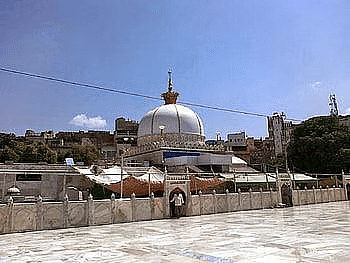
Handicrafts:
- Ajmer is known for its handicrafts, including embroidered textiles, pottery, and jewelry.
British Rule:
- In 1818, Daulat Rao Sindhia, the king of Gwalior, ceded Ajmer to the British.
- It became a part of the Bengal Presidency of British India until 1836 when it was moved into the North-Western Provinces.
Kannauj
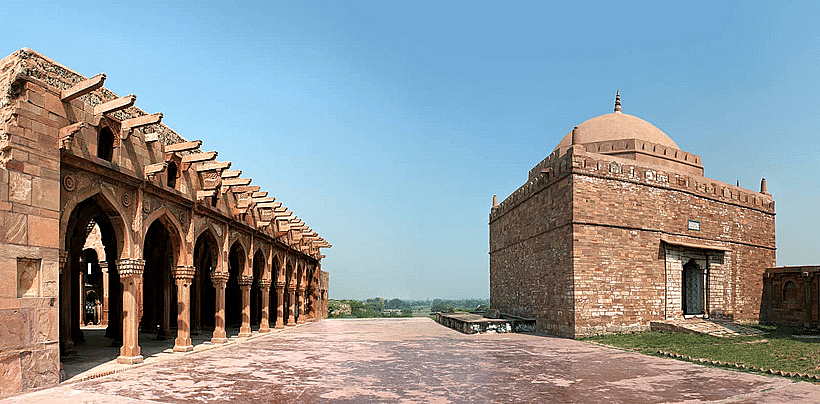
- Located in present-day Uttar Pradesh, Kannauj, formerly known as Kannakujja in early Buddhist literature, served as a crucial point on the trade route from Mathura to Varanasi. It played a central role in the Tripartite Struggle, also called the Kannauj Triangle Wars, involving the Gurjara-Pratiharas, Palas, and Rashtrakutas during the 8th to 10th centuries.
- It later became the capital of the Gurjara-Pratihara dynasty and was a significant center for imperial Indian dynasties in medieval times. The city witnessed the rule of the Maukhari and Pushyabhuti dynasties, with Chinese pilgrims Fa-hien and Xuanzang visiting during different periods.
- Under the Gahadavala dynasty, particularly during Govindachandra's rule, Kannauj reached unprecedented glory. Mahmud of Ghazni captured Kannauj in 1018, and later, the Battle of Kannauj in 1540 saw Humayun's defeat by Sher Shah Suri.
- Noteworthy for its traditional Kannauj Perfume, a government-protected product, the city is hailed as 'India’s perfume capital,' hosting over 200 perfume distilleries. Kannauj thrives as a market center for perfume, tobacco, and rose water.
 Perfume Making
Perfume Making
Thanjavur
- Also known as Tanjore, this city is located in Tamil Nadu and is believed to have derived its name from 'thanjam puguntha oor,' meaning 'the town where refugees entered.'
- It served as the capital of the Chola dynasty and was a prominent hub for art, culture, and architecture in South India. Raja Raja Chola I established it as the Chola dynasty's capital during the 9th century, and he built the renowned Brihadisvara Temple dedicated to Lord Shiva in the Dravidian style. This UNESCO World Heritage Site stands as an exceptional example of Chola art and architecture.
- Following the decline of the Cholas, the city witnessed the rule of various dynasties, including the Mutharaiyar dynasty, Pandyas, Vijayanagar Empire, Madurai Nayaks, Thanjavur Nayaks, Thanjavur Marathas, and finally, the British Empire.
- The city is associated with the distinctive Tanjore painting style, and it's often referred to as the 'Rice bowl of Tamil Nadu' due to its strategic location in the Cauvery Delta, making it one of the most productive regions in the state.
- Thanjavur has a rich cultural heritage, highlighted by Bharatnatyam and Carnatic music performances. The city is known for the Thanjavur style of painting, characterized by its use of golden and red hues. The Saraswati Mahal Library within the palace walls preserves a vast collection of ancient manuscripts in Sanskrit, Tamil, and Telugu.
- Recognized for silk weaving, the city is also famous for the iconic handicraft, 'Thalaiyatti bommai' or 'Dancing dolls,' made from clay, wood, or plastic.
- In 1855, British India took control of the city through the Doctrine of Lapse when Shivaji II, the last ruler of Thanjavur Marathas, passed away without a legitimate male heir.
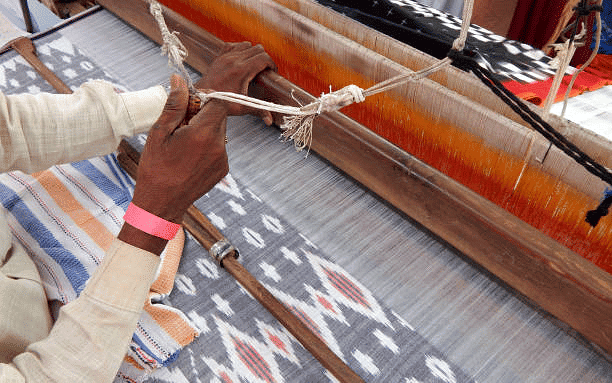 Silk weaving
Silk weaving
Ujjain
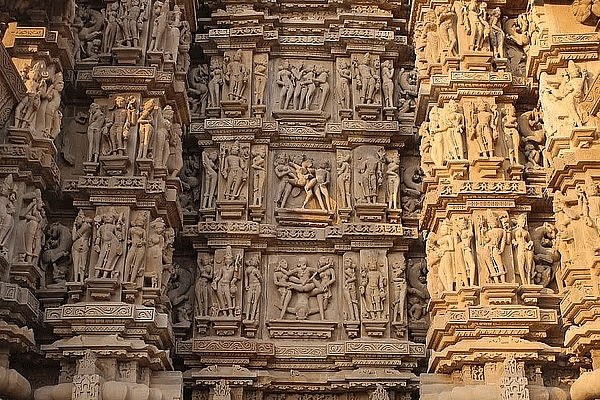
- An ancient city in present-day Madhya Pradesh, Ujjain lies on the eastern bank of the Shipra River and was historically the capital of the Avanti Kingdom according to the Mahabharata.
- In the 4th century BCE, Mauryan emperor Chandragupta annexed Avanti, and his grandson Ashoka's edicts indicate Ujjain as the capital of the Western province. Ashoka served as Viceroy during his father Bindusara's reign.
- Ujjain witnessed the rule of various empires and dynasties, including the Shungas, Western Satraps, Satavahanas, and Guptas. It flourished as a major center for trade, learning, and astronomy during the Gupta period.
- From the 9th to the 14th century CE, the Paramaras shifted their capital to Dhar. The city faced invasions and plunder by Mahmud of Ghazni and Iltutmish of the Delhi Sultanate in 1235 CE.
- After the decline of the Paramara kingdom, Ujjain came under Islamic rule. Sawai Raja Jai Singh constructed the Jantar Mantar, and in the 18th century, it became the capital of the Scindia state of the Maratha Empire under Ranoji Scindia.
- The Battle of Ujjain in 1801 between Holkars and Scindias resulted in the defeat of the Scindias.
- Notable attractions in Ujjain include the 'Mahakaleshwar Jyotirlinga,' an ancient temple reconstructed by the Scindias, and the 'Ujjain Simhastha,' also known as 'Ujjain Kumbh Mela,' held once in 12 years where Hindus gather to bathe in the sacred river.
- Referred to as 'Swarna Sringa' in the local language for the golden towers of its many temples, Ujjain holds a special geographical significance according to the Surya Siddhanta.
- Historical accounts by Kalidasa in Meghdutam, Shudraka in Mrichchhakatika, and Somadeva’s Kathasaritsagara highlight Ujjain's richness and glory. In the 8th century CE, Ujjain faced invasions by the Arabs of the Umayyad Caliphate, who called the city Uzayn.
- Archaeological excavations from the Mauryan period at Ujjain reveal artifacts like Northern Black Polished Ware, copper coins, terracotta ring wells, and ivory seals with Brahmi text.
Puri
- In Sanskrit, the term “Puri” translates to a town or city and holds significance as one of the Char Dham pilgrimage sites for Hindus.
- Puri is renowned for the Jagannath Temple, dedicated to Lord Jagannath (a form of Lord Krishna), his sister Subhadra, and his elder brother Balabhadra.
- An important pilgrimage site and cultural center in medieval India, the Jagannath Temple in Puri faced 18 invasions, primarily for treasure plunder rather than religious reasons.
- The first invasion occurred in the 8th century AD by the Rastrakuta king Govinda II, and the final invasion took place in 1881 AD by the monotheistic followers of Alekh (Mahima Dharma).
- Adi Shankaracharya established the Govardhana Matha in Puri, and the city hosts several other Mathas. In the 12th century AD, the Emar Matha was founded by the Tamil Vaishnava saint Ramanujacharya.
- Sages like Bhrigu, Atri, and Markandeya are closely associated with this place, known locally as ‘Sri Kshetra,’ and the Jagannath temple is referred to as ‘Badadeula.’
- In Akbar's Ain-i-Akbari and subsequent Muslim historical records, Puri was known as Purushottama. The famous Jagannath temple, recognized as ‘Yamanika Tirtha’ and ‘White Pagoda,’ was constructed by King Anatavarman Chodaganga Deva of the Eastern Ganga Dynasty in the 12th century.
Madurai
Madurai, situated in Tamil Nadu along the banks of River Vaigai, is known as matiray in a 2nd-century BCE Tamil-Brahmi inscription (Iravatham Mahadevan), signifying a 'walled city.'
- The city goes by various names such as ‘Madurai’, ‘Koodal’, ‘Malligai Maanagar’, 'Naanmadakoodal,' and ‘Thirualavai.’ Some believe 'Madurai' is derived from the word 'Marutham,' representing the landscape type during the Sangam age.
- Mentioned in the Mahavamsa and Kautilya’s Arthashastra, Madurai is also known as ‘Thoonga Nagaram,’ meaning ‘the city that never sleeps.’ Sangam literature, like Maturaikkanci, highlights Madurai's significance as the capital city of the Pandya dynasty, hosting the First Sangam.
- Madurai is renowned for the Meenakshi Amman Temple and is primarily considered a Vaishnavaite city, often referred to as the ‘Southern Mathura’ in Vaishnava texts.
Ayodhya
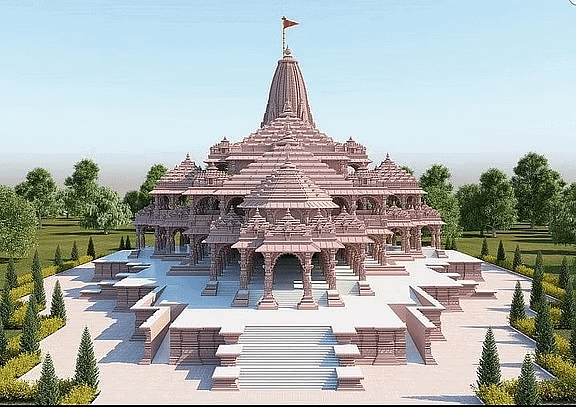
- Ayodhya, an ancient city and a significant religious center, is widely recognized as the birthplace of Lord Rama in Hinduism.
- Historically, Ayodhya was known as Saketa, and references in the Samyutta Nikaya and Anguttara Nikaya indicate that Buddha resided in Saketa multiple times.
- Early Jain canonical texts, including Antagada-dasao, Anuttarovavaiya-dasao, and Vivagasuya, also mention Mahavira's visits to Saketa.
- Situated on the banks of the Sarayu River in the Indian state of Uttar Pradesh, Ayodhya held importance as a city of the Kosala Mahajanapada.
Dwarasamudra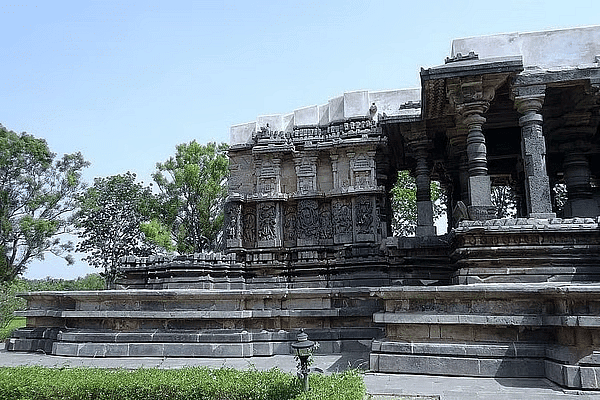
Dwarasamudra
- Halebidu, situated in the Hassan district of Karnataka, holds historical significance and was formerly known as Dwarasamudra.
- Around the 12th century, Hoysala ruler Vishnuvardhana (Bittideva) established Dwarasamudra as the capital.
- Famous for its Hindu and Jain temples showcasing Hoysala architecture, Halebidu is a notable town in Karnataka.
- In 1311, Malik Kafur besieged the Hoysala capital Dwarasamudra during his southern expedition, leading to the defeat of ruler Veera Ballala III.
Thiruvarangam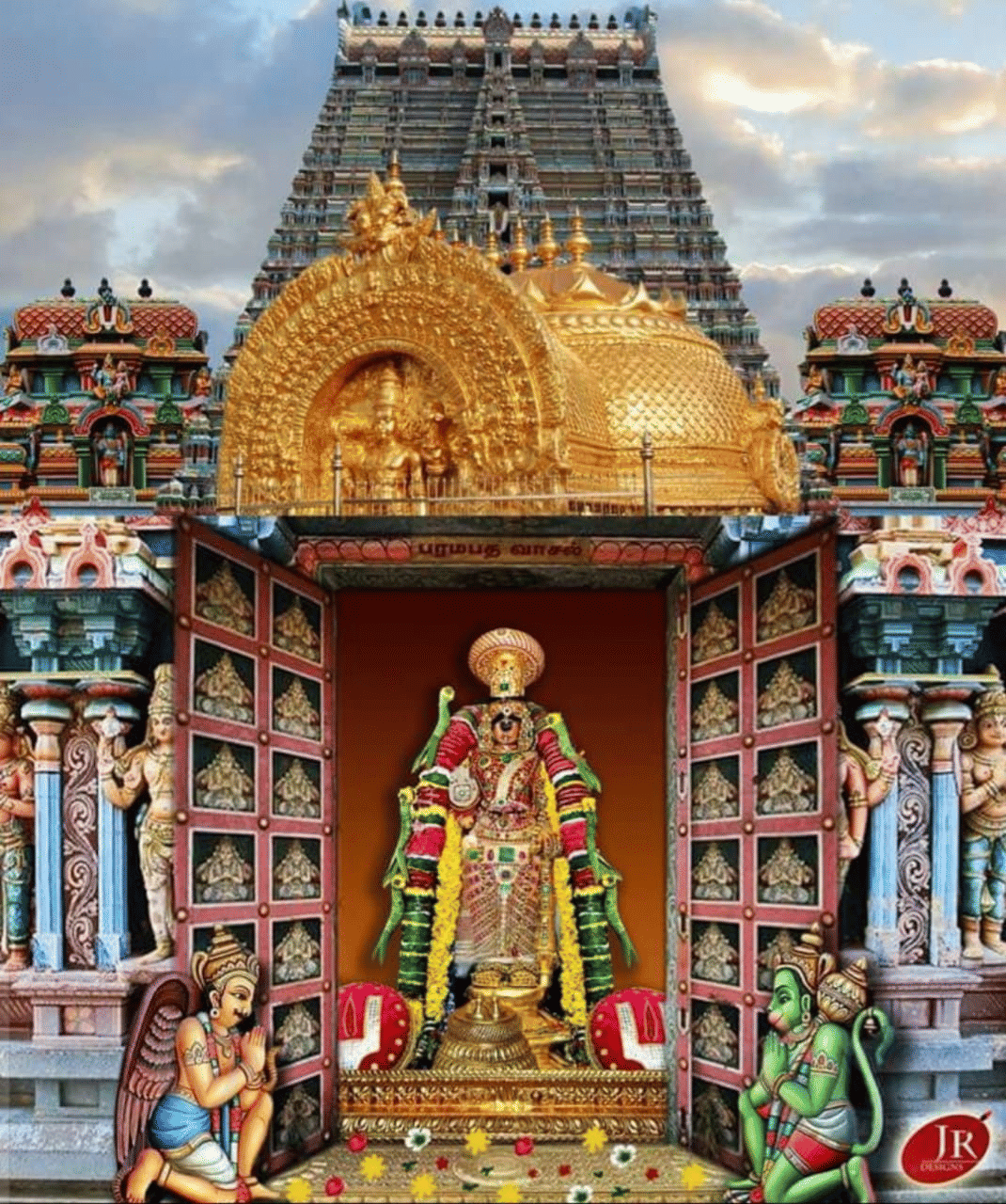 Ranganathaswamy
Ranganathaswamy
- Located on the Cauvery River, this city is essentially an island and is renowned for the well-known Ranganathaswamy Temple.
- The Sri Ranganathaswamy Temple, dedicated to Ranganatha (a form of Vishnu), showcases a distinctive Dravidian architectural style.
- Out of the 108 temples, this temple holds a unique status as the only one praised by all the Alvars, who were poet-saints of the Bhakti movement.
- The temple is adorned with 247 pasurams (divine hymns) dedicated to its name.
Sisupalgarh 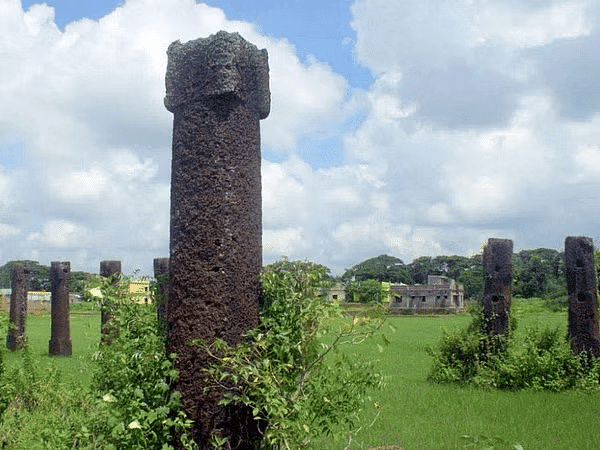
- Situated near Bhubaneswar in Odisha, Sisupalgarh was once the capital of Kalinga, the ancient name for Odisha.
- With a history dating back 2000 years, Sisupalgarh is recognized as Kalinganagara during the reign of Kharavela and Tosali during Ashoka's time.
- As one of India's largest and best-preserved ancient fortifications, the remains of Sisupalgarh were discovered in 1948 by B.B. Lal, an Indian archaeologist.
- The construction of Sisupalgarh was based on Jala Durga, a unique type of fortification situated within a water body.
Nalanda 
- Situated in the central part of India within the Nalanda district of Bihar, this city gained prominence for its significant role in Buddhist education and dissemination.
- The establishment of Nalanda Mahavihara dates back to the 5th century BC, credited to Kumaragupta of the Gupta dynasty.
- During its existence, Nalanda received support and patronage from influential rulers like King Harshavardhana of Kannauj, the Pala Rulers, and numerous scholars.
- Nalanda Mahavihara stood as one of the oldest and largest universities in ancient India, playing a crucial role in the field of education.
Kausambi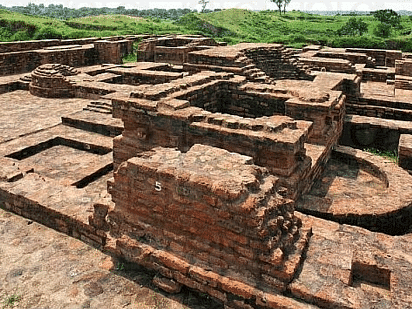
- As the capital of the Vatsa kingdom, Kausambi was situated in present-day Uttar Pradesh.
- References in the Mahaparinibbana Sutta and Mahasudassana Sutta of Digha Nikaya highlight Kausambi's significance as an important city during that era.
- Kausambi stood out as a major center of learning, attracting renowned Buddhist scholars and philosophers.
- Its strategic location near the confluence of the Ganges and Yamuna rivers made Kausambi a pivotal trade center.
- Archaeological excavations led by the Archaeological Survey of India (ASI) at Kausambi uncovered ancient stupas, monasteries, temples, and other structures, offering valuable insights into its rich heritage and cultural history.
Pataliputra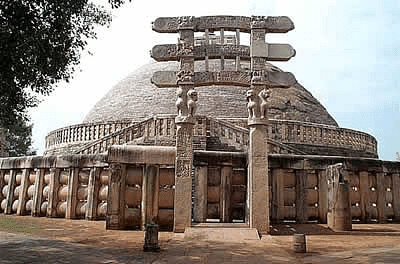
- Pataliputra, identified as modern-day Patna, was originally established by Haryanka ruler Ajatashatru in 490 BCE.
- Magadha king Udayin (Udaybhadra) laid the city's foundation at the confluence of the Son and Ganges rivers, subsequently shifting his capital from Rajgriha to Pataliputra.
- Over time, Pataliputra served as the capital for various dynasties, including the Shishunaga, Nanda, Maurya, and the Pala.
- According to Megasthenes, Pataliputra boasted a highly efficient local self-government system, and its strategic location enabled it to dominate riverine trade in the Indo-Gangetic plains during the Magadha period.
- Transforming into a significant center of trade and commerce, Pataliputra attracted merchants and, during Ashoka's reign, became one of the world's largest cities.
- The Third Buddhist Council, held in 250 BC under the patronage of Emperor Ashoka of the Maurya dynasty, took place in Pataliputra and was presided over by Mogaliputta Tissa.
- In a later era, Sher Shah Suri chose Pataliputra as his capital, renaming it Patna. Noteworthy excavation sites in Pataliputra include Kumrahar and Bulandi Bagh.
- During Ashoka's initial reign, the creation of Ashoka's Hell, an elaborate torture chamber masked as a luxurious palace, is believed to be another significant development in Pataliputra.
Tamralipta (Tamluk) 
- Tamralipti, also known as Tamralipta, is situated in the southern part of West Bengal, deriving its name from the Sanskrit term 'Tamra,' meaning copper.
- This city is referenced multiple times by notable historical figures such as the Greek astronomer-geographer Ptolemy, Roman author and philosopher Pliny, and Chinese monk travelers Fa-hien, Hsuan-tsang, and Vi Jing.
- Mentions of Tamralipta can be found in various works including Dashakumaracharita by Dandin, Raghuvamsa by Kalidasa, Kathasaritsagara by Somadeva Bhatta, Arthashastra by Kautilya, Brihatsamhita by Varahamihira, Mahavamsa, and Dipavamsa.
- Once an ancient port city in the present East Medinipur district of West Bengal, Tamralipta also served as a port during the Gupta era in eastern India.
- According to Panini's Ashtadhyayi, Uttarapatha extended from north-west India to the port of Tamralipti in the Bay of Bengal.
- During Xuanzang's visit in 639 AD, Tamralipta was identified as one of the Buddhist Kingdoms, with main exports from its port including indigo, silk, and copper.
- Jaina texts state that Tamralipta was the capital of the Kingdom of Vanga, and archaeological excavations by the Archaeological Survey of India (ASI) uncovered rammed floor levels and ring wells in the area.
Central Medieval Period (13th—16th Century)
Daulatabad
- Founded by Bhillama V, a Yadava Prince, who broke ties with the Chalukyas and established Yadava power in the west.
- In 1308, Alauddin Khilji annexed the city.
- Became the capital of the Delhi Sultanate under Muhammad bin Tughluq.
- Muhammad bin Tughluq temporarily shifted the capital from Delhi to Daulatabad.
- In 1499, Daulatabad became part of the Ahmadnagar Sultanate.
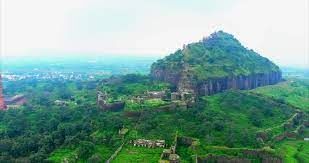 Daulatabad
Daulatabad
Mandavgarh
- Mandavgarh is an ancient city located in the Mandav area of Dhar district, Madhya Pradesh.
- Originally built as a walled town by the Parmara monarchs in the 6th century.
- Attained prominence in the 10th and 11th centuries under the Paramaras.
- Notable places include Roopmati’s Pavilion, Baz Bahadur’s Palace, Darya Khan’s Tomb Complex, Shri Mandavagadh Teerth, Hoshang Shah’s Tomb, Hindola Mahal, etc.
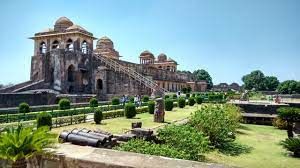 Mandavgarh
Mandavgarh
Hampi
- Hampi, a fortified city, served as the capital of the Vijayanagara Empire in the 14th century.
- Situated on the banks of the Tungabhadra River in central Karnataka.
- During the 3rd century BCE, this region was part of the Maurya Empire according to Emperor Ashoka’s Rock Edicts.
- Also known as Pampa Kshetra, Kishkindha Kshetra, and Bhaskara Kshetra, named after the River Pampa (earlier name of Tungabhadra River).
- The wide chariot street hosts the most iconic temple complex in Hampi, known as the Vitt chariot.
- The Karnataka Tourism department highlights this chariot as a significant attraction.
- Monuments in Hampi can be categorized into three parts: religious structures, fortifications with bastions and gateways, and demarcated areas by the Archaeological Survey of India.
- Notable temples include the Achyutaraya Temple, Badavi Linga Temple, Chandramauleshwara Temple, Hazara Rama Temple Complex, and others.
- In the 15th century, facing water scarcity in the capital city, Vijayanagara King Devaraya I constructed a barrage on the Tungabhadra River.
- Additionally, a 24 km long aqueduct was commissioned from the Tungabhadra River to the capital to address water needs for drinking and irrigation.
- In the 16th century, King Krishnadevaraya erected flood protection walls along the Tungabhadra River to safeguard the capital.
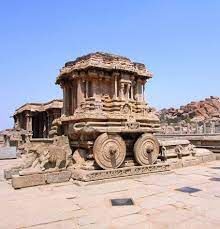 Hampi
Hampi
Fatehpur Sikri
- Founded in 1571 by Mughal Emperor Akbar, served as the Mughal Empire's capital from 1571 to 1585.
 Fatehpur Sikri
Fatehpur Sikri - Located near Agra, Fatehpur Sikri is a fortified city.
- The Buland Darwaza, the world's highest gateway at fifty-four meters, is a key architectural feature.
- Named 'City of Victory' after Akbar's successful Gujarat campaign in 1573.
- Now a UNESCO World Heritage Site and a popular tourist destination in Agra.
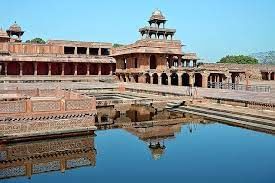 Fatehpur Sikri
Fatehpur Sikri
Bidar
- The name 'Bidar' is derived from 'bidiru,' meaning bamboo.
- Part of the Mauryan Empire, later ruled by Satavahanas, Kadambas, Chalukyas, and Rashtrakutas.
- Capital of the Bahmani Sultanate briefly, a center of Islamic art and culture.
- Shifted from Gulbarga to Bidar by Sultan Ahmed Shah Wali Bahmani.
- In 1724, Bidar became part of the Asaf Jahi Kingdom of the Nizams.
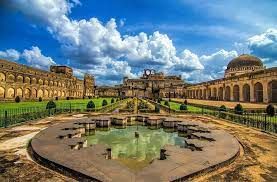 Bidar
Bidar
Gaur
- Historic city in West Bengal founded by King Shashanka, part of the Gauda Kingdom.
- Invaded by Mughal Emperor Humayun, renamed Jannatabad.
- Conquered by Bakhtiyar Khalji in 1203, ruled by Pala and Sena dynasties.
- The ruins act as the international border between West Bengal and Bangladesh.
- Features monuments and the Kotwali Gate serves as the border checkpoint.
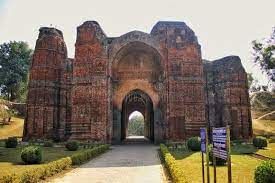 Gaur
Gaur
Bijapur
- Established by the Chalukyas of Kalyani in the 10th-11th centuries, later part of the Vijayapura.
- Conquered by Bahmani Sultanate in 1347, ruled by Adil Shahi dynasty from 1490-1686.
- Notable architectures include Bijapur Fort, Bara Kaman, Jama Masjid, and Gol Gumbaz.
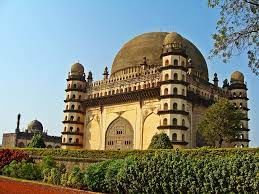 Bijapur
Bijapur
Warangal
- Capital of the Kakatiya kingdom in the 12th-14th century, known for its impressive fort and irrigation tanks.
- Monuments like Warangal Fort and Swayambhu Temple built by Kakatiyas.
- Awarded World Heritage city status by UNESCO in 2013, recognized as the Best Heritage City by the Ministry of Tourism.
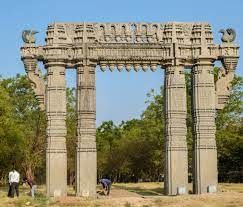 Warangal
Warangal
Nagarjunakonda
- Historical town near Nagarjuna Sagar in Andhra Pradesh, former capital of the Ikshvaku Kingdom.
- Also known as Vijayapuri, a rich Buddhist site with Mahacheitya stupa believed to hold Buddha's remains.
- Archaeological discoveries include an 'Ashwamedha' sacrifice altar and Paleolithic/Neolithic equipment.
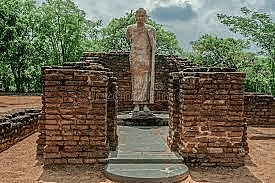 Nagrajunakonda
Nagrajunakonda
Late Medieval Period (16th Century onwards)
Agra
- Agra, a significant city, served as the capital mainly under Mughal emperors Akbar and Shah Jahan.
- Hindu history suggests the Sanskrit word 'agra' means 'a place with little forests' where Krishna played with the gopis of Vrindavan.
- Famous landmarks include Taj Mahal (built by Shah Jahan) and Agra Fort (a UNESCO World Heritage Site).
- Agra is part of the 'Golden Triangle' tourism circuit, along with Jaipur and Delhi.
- Lesser-known monuments like Chini ka Rauza and Mehtab Bagh were constructed by the Mughals.
- Agra was a center for Christian missionaries, with notable churches like The Cathedral of the Immaculate Conception.
- The city hosts cultural events like Taj Mahotsav and Taj Literature Festival.
- Fell successively to the Marathas and later to the East India Company.
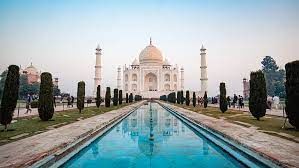 Tajmahal
Tajmahal
Jaipur
- Formerly known as Jeypore, Jaipur was founded by Maharaja Sawai Jai Singh II in 1727.
- Planned based on Vastu Shastra and Shilpa Shastra principles, with architecture influenced by the Mughal era.
- The city was painted pink in 1876 to welcome Albert Edward, Prince of Wales.
- Part of the west Golden Triangle tourist circuit along with Delhi and Agra.
- Known for Lehariya Sarees, Bandhani Dupatta, Meenakari work, Blue Pottery, Lac Bangles, and Miniature paintings.
 Hwamahal
Hwamahal
Murshidabad
- Situated on the eastern bank of the Bhagirathi River, Murshidabad was the capital of the Bengal Nawab Murshid Quli Khan.
- Part of the Gauda Kingdom and Vanga Kingdom in ancient Bengal.
- Makhsus Khan, a merchant, is credited for the town's development as per Riyaz-us-Salatin.
- Nawab Murshid Quli Khan made Murshidabad an efficient capital city.
- Decline started after the defeat of the last independent Nawab Siraj-ud-Daulah by the British in the Battle of Plassey (1757).
- Famous for handicrafts, sericulture, and Murshidabad Silk; a hub for silk, ivory, and other valuable goods trade.
- Notable places include Hazarduari Palace, Katra Masjid, Kathgola Gardens, Motijheel Park, Char Bangla Temple, Imambara, Khosh Bag, and House of Jagat Seth.
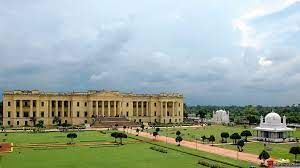 Murshidabad
Murshidabad
Delhi — A City of Seven Sisters
- Delhi, existing as a city before the medieval period, gained political and administrative prominence under various dynasties.
- Founded in 1052 by Anangpal Tomar, it became the capital during the Tomar Dynasty's rule.
- The Tomar Dynasty, established in the early 8th century, had Anangpur village in Haryana as its capital.
- Anangpal Tomar constructed the Anangpur Dam, and his son Surajpal built the Surajkund Ancient Reservoir.
- In 1180, the Rajput Chahamana kings conquered Lal Kot, renaming it Qila Rai Pithora.
- In 1192, Muhammad Ghori defeated Prithviraj Chauhan, establishing Muslim power in northern India.
- By 1206, Delhi became the capital of the Delhi Sultanate under the Slave Dynasty led by Qutb-ud-din-Aybak.
- According to the Mahabharata, the ancient city of Indraprastha, the 'City of the God Indra,' was the capital of the Pandavas.
- Purana Qila is believed to be built over the site of ancient Indraprastha, with archaeological finds dating back to 1000 B.C.
- Seven cities in Delhi have been recognized based on historical records.
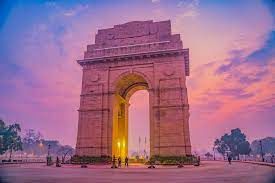 India Gate
India Gate
Indraprastha
- Indraprastha, mentioned as a glorious kingdom in the Mahabharata, was established by King Yudhishthira around 1500 BC.
- Situated on the banks of the Yamuna River, it is identified in Ptolemy’s Geography as the city 'Indabara' in the 2nd century CE, possibly derived from 'Indapatta' in Prakrit.
- Indian historian Upinder Singh considers the equation of Indabara with Indraprastha as 'plausible.'
- Ancient Indraprastha was the capital of the Kuru Mahajanapada and known as Indapatta in Buddhist literature.
- The exact location of Indraprastha is uncertain, but the Purana Qila complex in present-day New Delhi is believed to be its probable site.
- Archaeological Survey of India excavations near Purana Qila indicate habitation in Indraprastha for almost 2,500 years.
 Indraprastha
Indraprastha
Seven Cities of Delhi
Historical records identify the seven cities of Delhi as:
- Qila Rai Pithora or Lalkot
- Siri
- Tughluqabad
- Jahanpanah
- Firozabad
- Shergarh or Dilli Sher-Shahi
- Shahjahanabad
The document Nitin Singhania Summary: Legendary Cities of Ancient and Medieval India | History for UPSC CSE is a part of the UPSC Course History for UPSC CSE.
All you need of UPSC at this link: UPSC
|
216 videos|855 docs|219 tests
|
FAQs on Nitin Singhania Summary: Legendary Cities of Ancient and Medieval India - History for UPSC CSE
| 1. What is the significance of Ajmer in the Early Medieval Period? |  |
Ajmer was a prominent city during the Early Medieval Period (6th-13th Century) in India. It served as the capital of the Chauhan dynasty and was a major center of trade and commerce. Ajmer also gained religious importance as it became a major pilgrimage site for both Hindus and Muslims.
| 2. What is the importance of Delhi in the Central Medieval Period? |  |
During the Central Medieval Period (13th-16th Century), Delhi emerged as a significant political and cultural center in India. It served as the capital of various dynasties, including the Delhi Sultanate and the Mughal Empire. Delhi witnessed the construction of iconic architectural marvels like the Qutub Minar and the Red Fort.
| 3. How did Delhi transform in the Late Medieval Period? |  |
In the Late Medieval Period (16th Century onwards), Delhi continued to be an important city, but its political power gradually declined. It faced invasions by various foreign powers, including the British. Delhi witnessed a blend of different architectural styles during this period, reflecting the influence of various ruling dynasties.
| 4. Why is Delhi referred to as the "City of Seven Sisters"? |  |
Delhi is often referred to as the "City of Seven Sisters" due to the presence of seven historical cities within its boundaries. These cities were established by different rulers throughout history, including Lal Kot, Siri, Tughlaqabad, Jahanpanah, Firozabad, and Shahjahanabad. Each of these cities contributed to Delhi's rich historical and cultural heritage.
| 5. What are some legendary cities of ancient and medieval India? |  |
Some legendary cities of ancient and medieval India include Varanasi, known for its spiritual significance; Hampi, known for its exquisite ruins of the Vijayanagara Empire; and Ujjain, known for its historical and cultural heritage. These cities have played a significant role in shaping India's history and continue to attract tourists from around the world.
Related Searches

